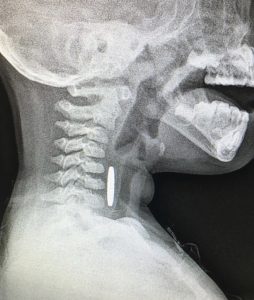 When it comes to coins ingested by children as foreign bodies in the gastrointestinal tract, ten cent pieces and two dollar coins are the most likely to be spontaneously passed, experience at a NSW hospital suggests.
When it comes to coins ingested by children as foreign bodies in the gastrointestinal tract, ten cent pieces and two dollar coins are the most likely to be spontaneously passed, experience at a NSW hospital suggests.
The findings provide some clue as to when a conservative ‘watch and wait’ approach is safe, according to clinicians who conducted an analysis of outcomes among children presenting at The Children’s Hospital Westmead between 1994 and 2004 after suspected coin ingestion.
The median age of presentation after coin ingestion was 3.4 years (range 7 months to 11 years) and the median time between ingestion and hospital presentation was two hours.
Gastrointestinal symptoms especially vomiting, drooling and gagging were common (67% of patients) along with other symptoms such as coughing or neck and chest pain.
Only 31% of 241 cases of coin ingestion were managed conservatively – usually if initial imaging confirmed the coin was either in the stomach or distal GI system.
However the most common location of the coin on x-ray was in the proximal third of the oesophagus or cricopharyngeus.
As a consequence, 69% of children went to theatre for endoscopic removal of the coin.
While coin ingestion was witnessed by a parent or sibling in 70% of cases, the researchers said one of the major risks was confusing coins, which could sometimes be left to pass, with button batteries which had to be removed urgently.
The study found toddlers, three years of age or younger, were most likely to swallow the smaller five cent and $2 coins. Older children were more likely to swallow mid-size 10 cent and $1 coins.
“Coins greater than 25mm (Australian 20c and 50c, US dollar and half dollar) tend not to be ingested in younger children due to the mismatch between coin and oropharyngeal/oesophageal diameters,” the study authors said.
Spontaneous passage occurred in 74% of children who swallowed a 10 cent coin, 48% of $2 coins and 33% of five cent coins.
They noted that many smaller coins were likely to be ingested and passed spontaneously in the community without symptoms or hospital presentation.
“Based on our findings with coin location and conservative management, we recommend that, in a child with witnessed ingestion and minimal symptoms, when the coin is in the distal oesophagus or beyond, an observation period overnight and of up to 24 h from time of coin ingestion can be trialled in anticipation of spontaneous passage,” they advised.
“In cases where there are significant symptoms or uncertainty about the foreign body (eg possibility of button battery), we recommend endoscopic retrieval in the operating theatre at the earliest opportunity.”
Photo supplied by Dr Narinder Singh